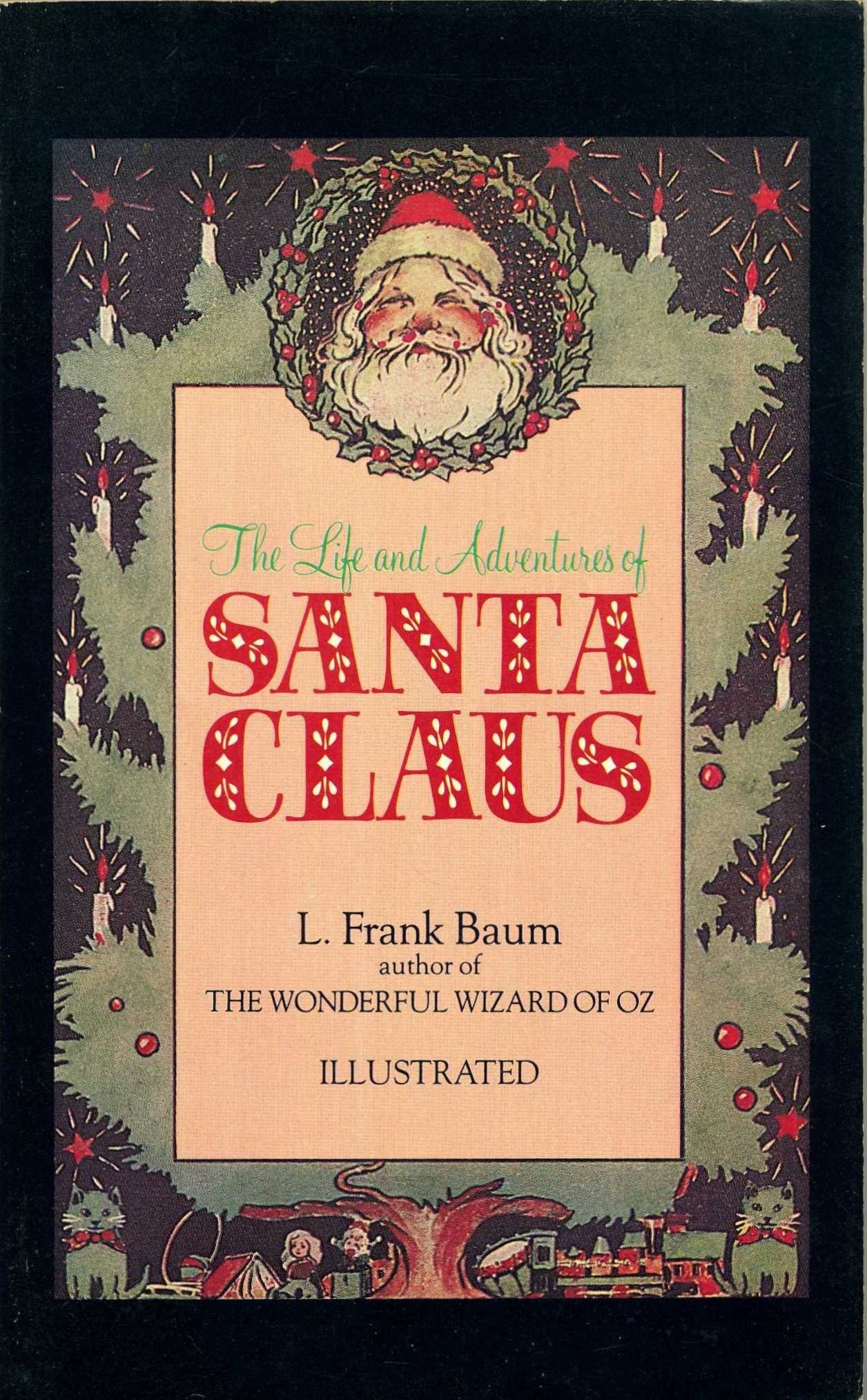
Glossie and Flossie, Racer and Pacer, Reckless and Speckless, Fearless and Peerless, and Ready and Steady
Trivia question of the day, What is this miscellaneous collection of random terms? I suspect by the rhyming pairs, many people might have a guess, and if you guessed Santa’s ten reindeer, then you would be right.
Ten reindeer? Wait, what? And what’s with these names?
These are Santa’s reindeer in the 1902 story The Life and Adventures of Santa Claus by none other than L. Frank Baum, who is best known for the book The Wonderful Wizard of OZ. The book was created as Christmas release in order to take advantage of the popularity of Wizard, even though it is believed that Baum wrote the book previous to the OZ books. It’s a short story, around 50 pages depending on the media, and the large print is enhanced with illustrations by Mary Cowles Clark.
Though I have been aware of this book for some years, I finally read it this morning, and to be honest, I found it less than enchanting. the writing is a little clunky (particularly the songs) and the magic of the OZ books just isn’t there.
In this story Santa is an abandoned child found in the woods by immortal sprites who raise him as their own. The name him Claus which means child in their language (nicely done) and he grows up surrounded by Fairies, Nymphs, Knooks, and Rhyls. All of these are under the reign of the Master Woodsman, the god figure and personification of the forest.
In true Hero with a Thousand Faces form, when Claus is a young man, he is taken by the Master Woodman from the forest of his youth for a tour of the world of human beings. Young Claus is particularly moved by children, particularly poor children, and he makes a decision to leave the forest and dedicate his life to helping children. Though he leaves his step-mother and friends behind, he is able to call upon them and their immortal powers to help him as he establishes himself in the Laughing Valley (no mention of the North Pole in this story)
The rest of the story outlines Santa’s evolution as he discovers his ability to build toys (apparently toys had not yet been invented) and distribute them to children. Among the canonical elements that are explained are entering the house through the chimney, putting gifts in stockings, giving gifts on Christmas Eve, and traveling the world on a reindeer pulled sleigh (though the reindeer don’t fly, they just run really fast).
Within this canonical framework are some elements unique to Baum’s story (beyond the ten reindeer). Santa is granted immortality at the time of death by a vote from the immortals. He is frustrated in his early career by a demon race called the Awgwas, which leads to a Paradise Lost type war of good versus evil. Mrs. Claus and the elves are nowhere to be seen. Santa is a workaholic, and he has no time for other things.
One early conflict is very interesting. Santa’s original service and early toys are given exclusively to children who are poor or neglected. However, a young princess comes to visit Claus and suggests that rich children are no less in need of his love and toys. SC is not able to navigate this by himself, so he calls all his woodland friends to a counsel, and they together decide that it’s pretty judgy to evaluate a child’s worthiness by zip code. The class issues that are seen in The Wonderful Wizard of OZ are clearly still on Baum’s mind as he works out the economics of Christmas.
In a bit of cleverness, toward the end of the story Santa discovers that more and more houses don’t have chimneys. To address this problem, he deputizes (the chapter is named “Santa’s Deputies”) parents to place gifts that he made in the stockings of children. There is even an undeveloped idea that Santa puts toys in shops so that parents in areas where he can’t reach in one night can help the process along by getting children’s gifts there. As a failed dry goods salesman, Baum seems to be putting in a plug for Christmas shopping!
This kind of writing is fascinating in its way. Rather than exclusively creating a story, the writer takes the frameworks of an existing legend and shoehorns in an origin story. Clement Moore’s “A Visit from St. Nicholas” took an established practice and added color and substance, much of which has carried into the legend as told today (his reindeer names are far superior). The Life and Adventures of Santa Claus does much the same thing, but would appear to be much less successful. Virtually knows the alternate reindeer names, or any of the “original” elements of this story…or that the story exists at all
On Flossie, on Glossie, on Racer…